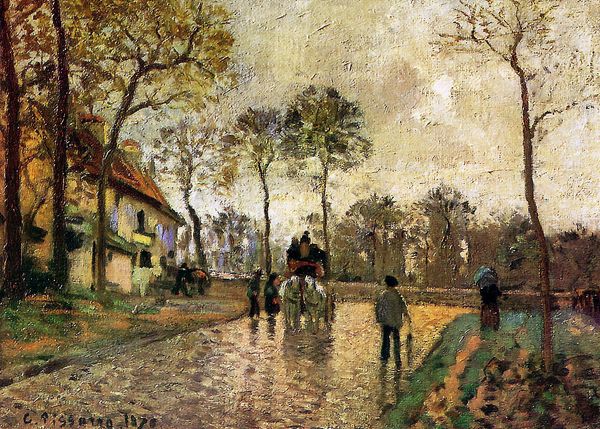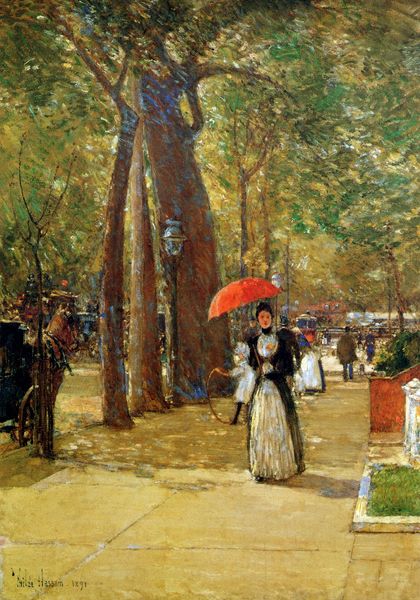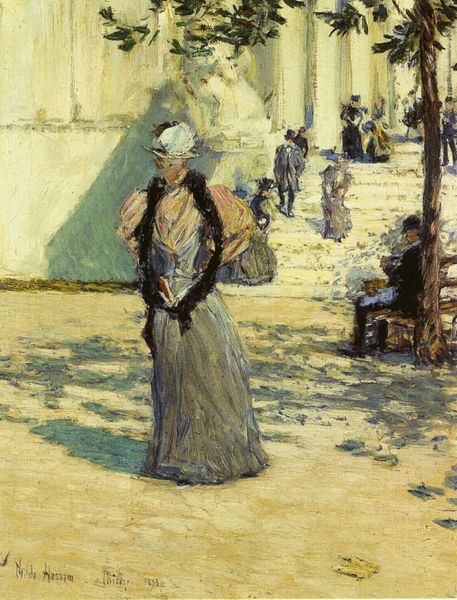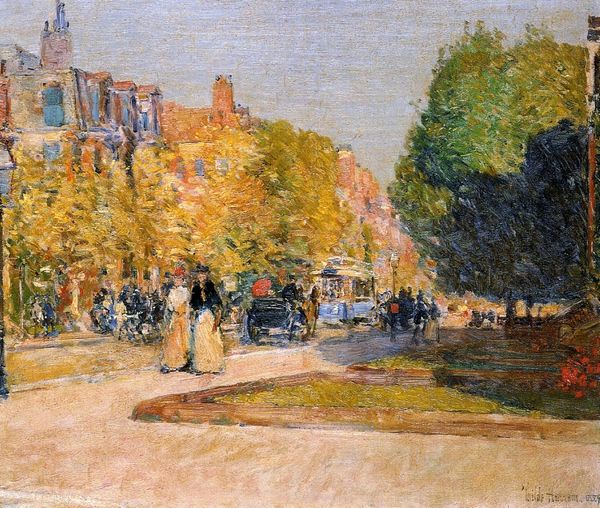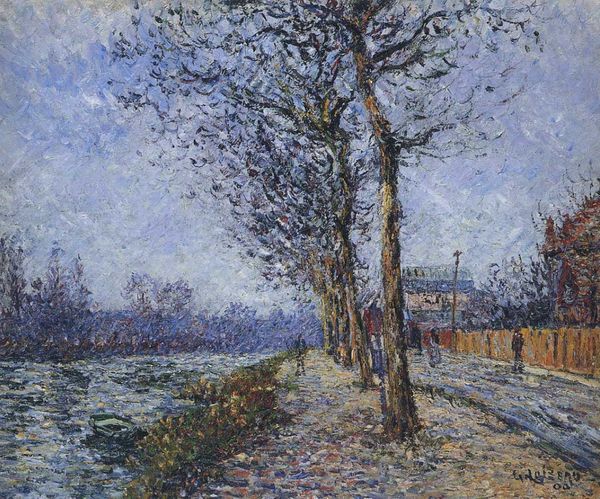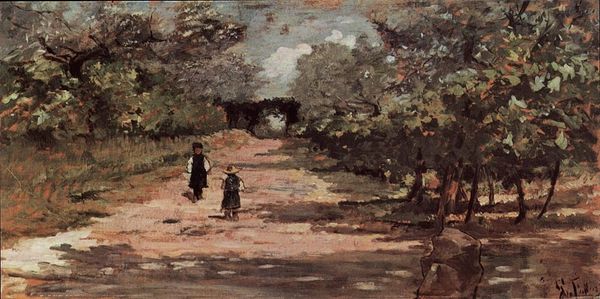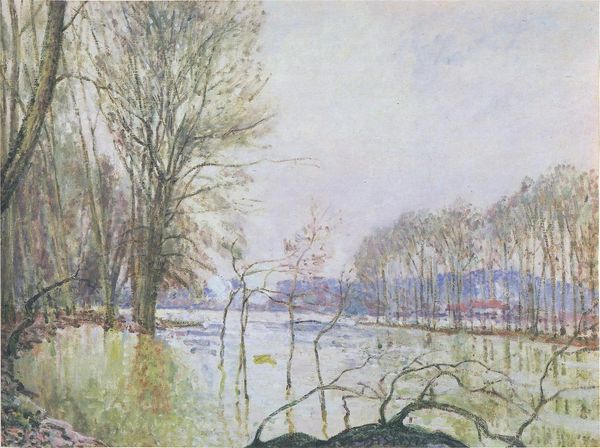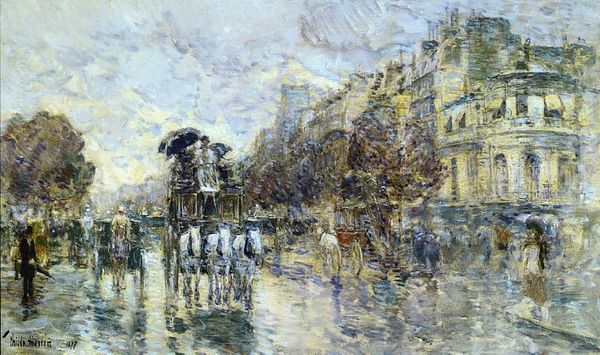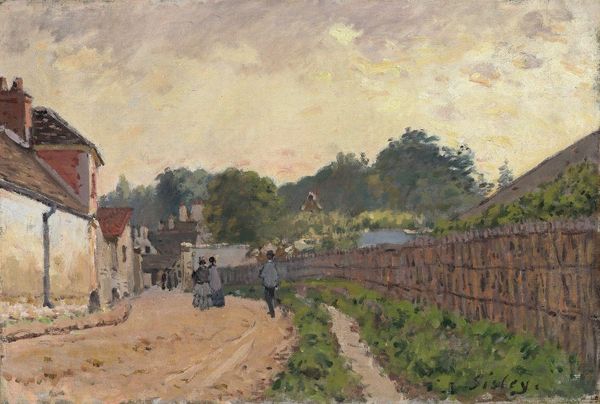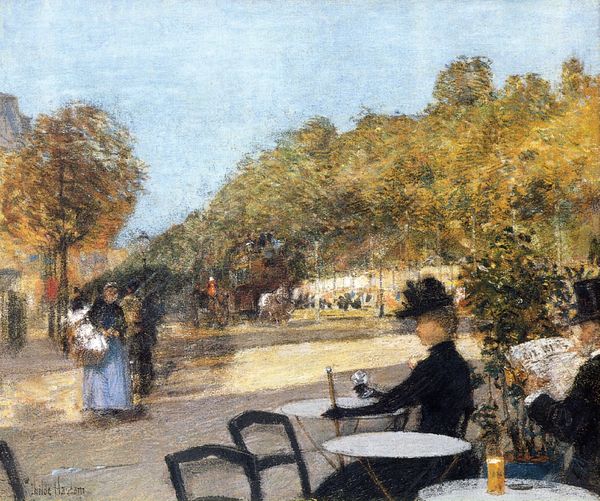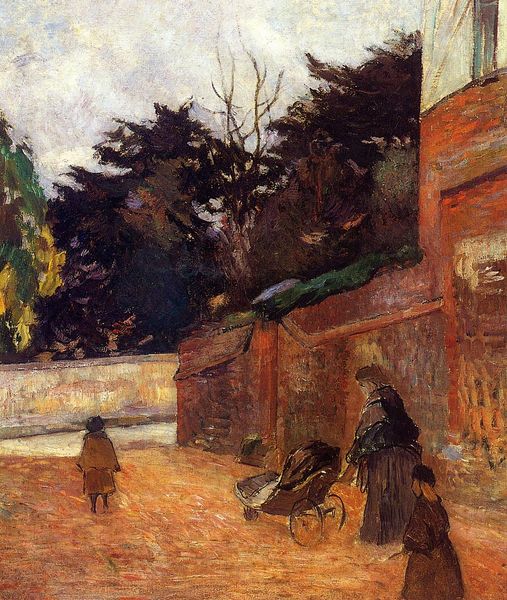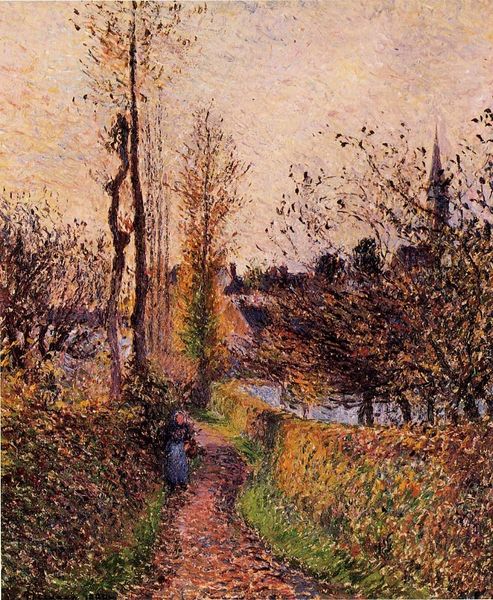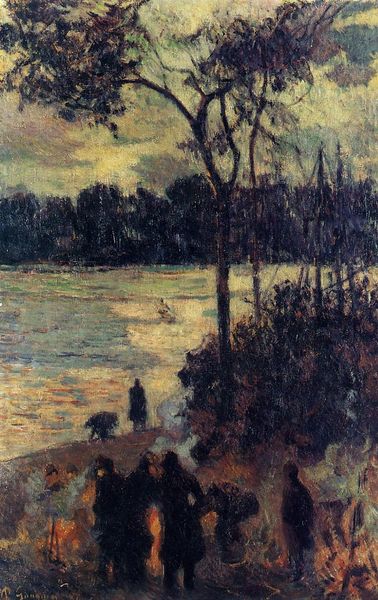
Copyright: Public domain
Curator: The wet cobblestones of Paris reflect a pearly light in Childe Hassam's "Rainy Day, Paris," painted in 1893. What's your immediate impression? Editor: It’s atmospheric, a quintessential Impressionist moment, really. The overcast sky and glistening street create this subdued, almost melancholy, beauty. The light is quite remarkable for a rainy scene. Curator: Hassam captures a slice of Parisian life, but it’s also a constructed view. The American artist had been living in Paris for several years, studying art, before creating this oil painting, which also adopts en plein air elements in it's painterly composition. This street, the Rue de Rivoli, was designed to represent Paris's modern age. The woman with the umbrella is likely placed in the artwork to capture that modern bourgeois, do you agree? Editor: Absolutely. The umbrella becomes a symbol of modern life, protection from the elements, but also perhaps a barrier, a shield from true connection. And, yes, the bourgeois are present and reflected within it. Look at how the reflections fragment her image but also link her to the street itself. She belongs and doesn't simultaneously. It is about urban experience and how it changes and shapes us. Curator: The painting almost idealizes the moment, filtering out much of the grit and poverty that existed at the time in favor of presenting a carefully composed, almost romantic vision. The color palette, although muted, it adds to the dream-like state. Editor: Right, there's an argument to be made about the ethics of aestheticizing reality, especially one that was probably difficult to undergo daily at the time. Yet, by presenting this filtered image of modern life, Hassam gives us a potent symbol for both what he finds appealing but also what is absent. This allows to create room for discussion. What we see but also what we expect. Curator: True. And that symbolic space becomes fertile ground for dialogue about urban experience. The fact that we continue to be fascinated by it even now reinforces that idea. The power of imagery remains undefeated. Editor: Indeed. Hassam’s captured a particular Paris that still resonates because it evokes the emotional complexities and contradictions of urban life itself. The history is there in layers if we're open to uncovering it.
Comments
No comments
Be the first to comment and join the conversation on the ultimate creative platform.
